digest | Robot Bee: flying like a real insect
May 10, 2019
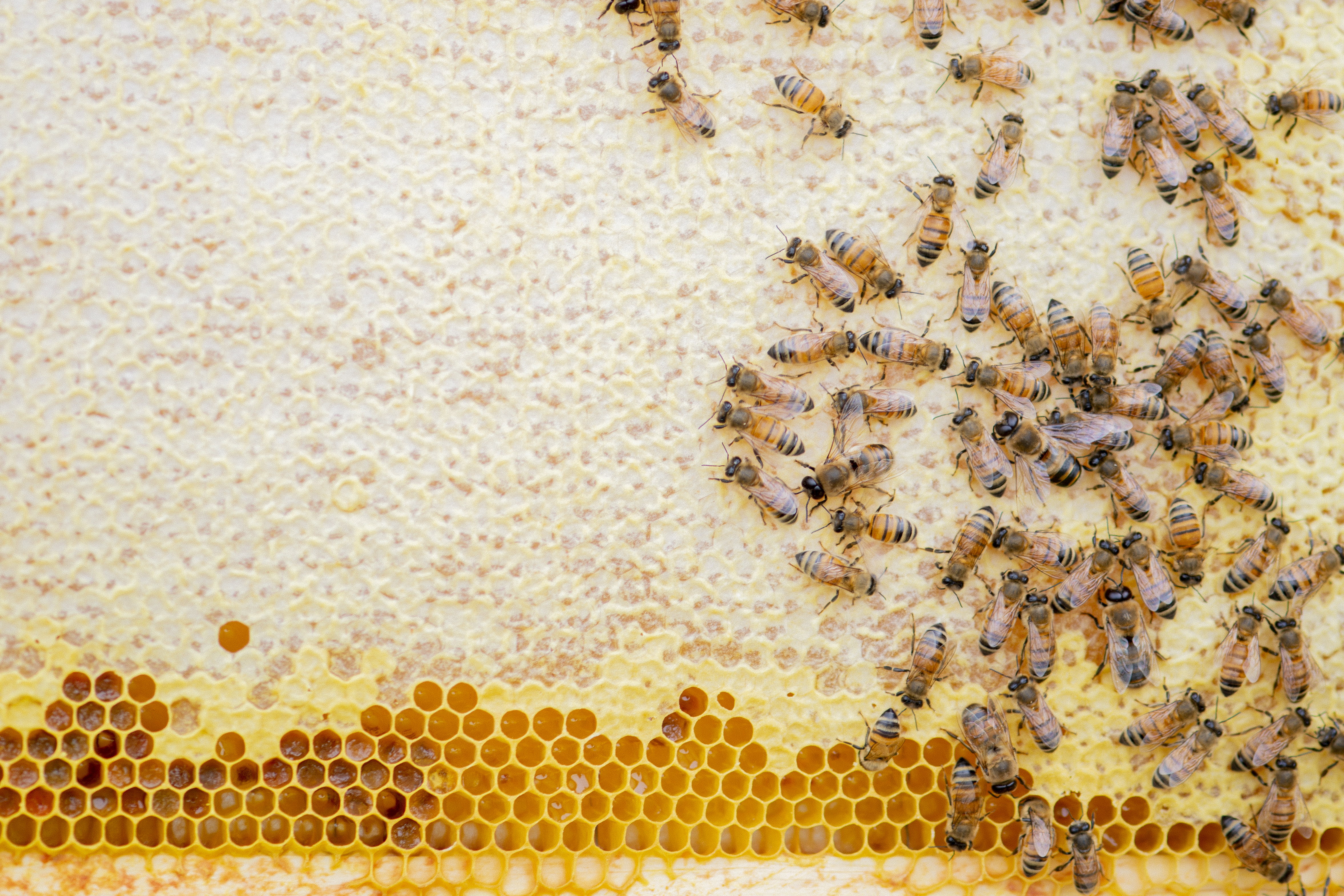
— contents —
~ story
~ videos
~ learning
~ by definition
~ reading
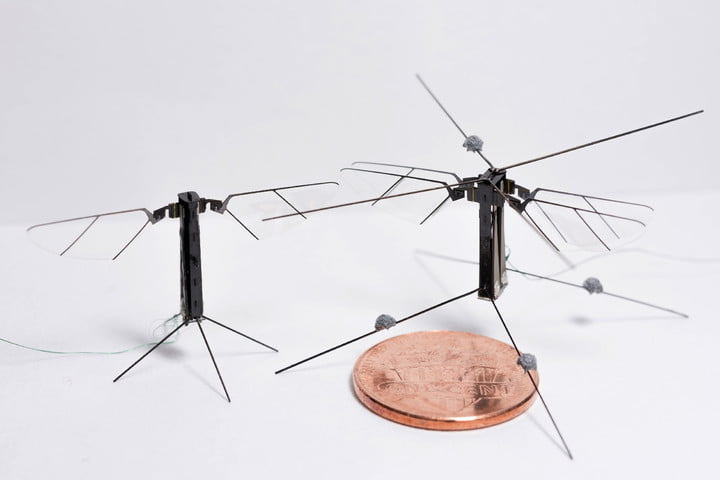
image | above
The robot bee prototype named Bee Plus.
photo: Univ. of Southern California
— story —
Engineers at the Univ. of Southern California have built a flying insect based on the anatomy of a bee. Called the Bee Plus robot: the nature-inspired flying bot weighs 95 milligrams and is the size of a penny.
The tiny bot is similar to Harvard University’s popular RoboBee project from year 2013. RoboBee had 2 wings, Bee Plus has 4 wings — like a real insect. The added wings gives the bot more life-like flying abilities. Each of the wings is driven by an actuator that’s simpler and lighter that the ones used by for RoboBee.
The prototype brings together collective knowledge from: robot design, control theory, aerodynamics, and micro-fabrication. Bee Plus can perch, land, swim, follow a path, and avoid obstacles.
The engineering team lists a range of potential uses for Bee Plus:
- artificially pollinating flowers
- robotic swarm research or search + rescue missions
- taking geological samples
- measuring gases in the atmosphere
- surveillance on planet Mars + moons
To achieve these dreams, the researchers will need to overcome this limitation: Bee Plus can only fly when it’s tethered to a power source. They’ve developed a possible solution called ‘‘catalytic artificial muscles’’ — a new type of actuation technology.
images | below
A honey bee gathers pollen while others return to their hive.

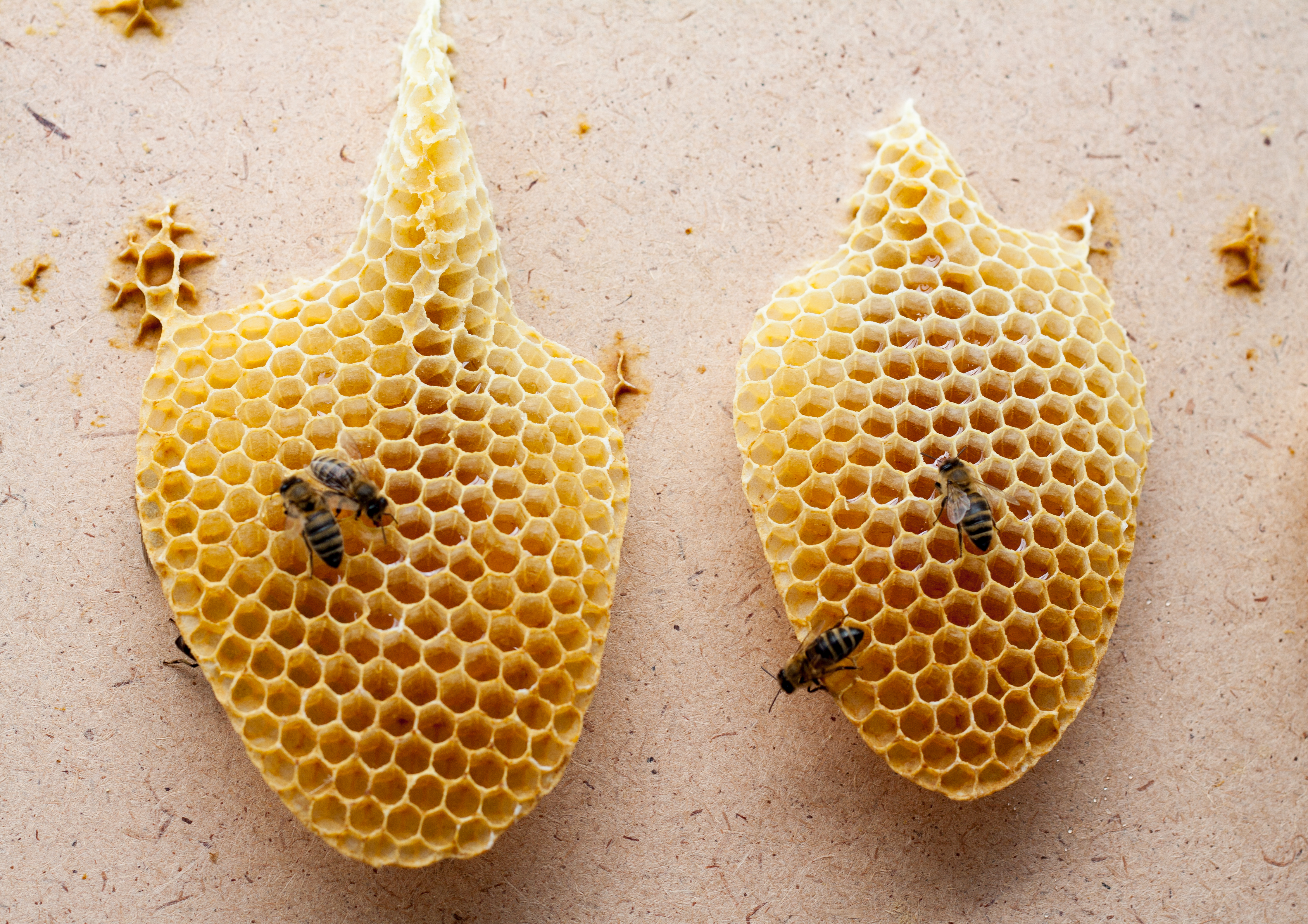
watch | video
Prototype robot bee named Bee Plus takes flight.
watch | video
Prototype robot bee named RoboBee takes flight.
watch | video
Tiny flying robot bees.
image | below
The robot bee prototype named RoboBee.
photo: Harvard Univ.
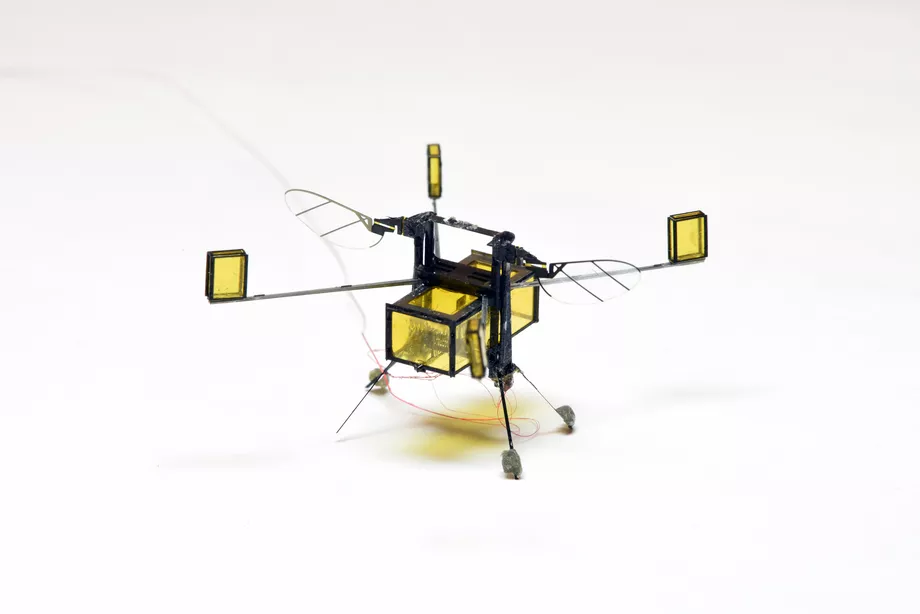
on the web | learning
Harvard Univ. | project: RoboBees
by definition | morphology
(noun) mor · phol · o · gy
The study of the forms of things.
A branch of biology that examines the form of living creatures.
by definition | actuator
An actuator is a part of a machine responsible for moving + controlling a mechanism or system — for example: by opening a valve. In simple terms, it’s a ‘‘mover.’’ An actuator requires a control signal plus a power source. Its power may be an electricity, hydraulic (fluid) pressure, or pneumatic (gas) pressure.
An actuator is a mechanical device takes the movement of its power source (the current of electricity, the pressure of gas or fluid) and directs it — like a steady stream — to move something. It also can be used to apply force. That motion can be any form — such as: blocking, clamping, or ejecting. Actuators are used in robotics and manufacturing — and in devices such as: motors, pumps, switches, and valves.
Developing miniature actuators to move robots the size of an insect — such as robot bees + robot hummingbird — is an engineering challenge.
on the web | learning
actuators: industrial | video
actuators: micro + macro | video
Engineering Insider | actuator
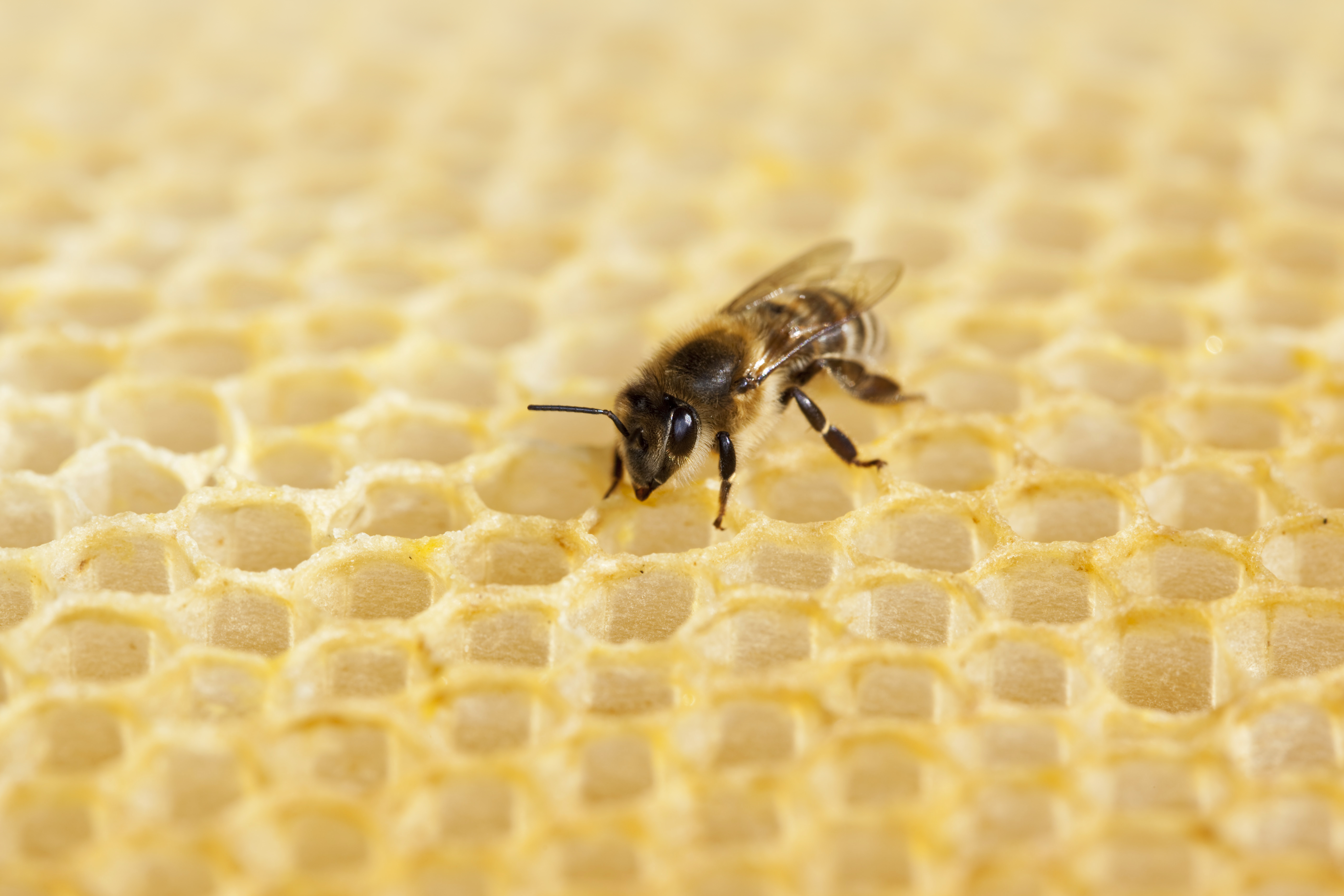
on the web | reading
Digital Trends | Univ. of Southern California’s penny-sized robotic bee
deck: Is the most sci-fi thing you’ll see all week.
the Verge | Robot bees can now dive in + out of water
deck: Using tiny combustible rockets
the Verge | Bee Optimistic: this drone can still pollinate plants even if all the bees die
deck: Meet the artificial pollinators of tomorrow.
NPR | Rise of the Robot Bees
deck: Tiny drones turned into artificial pollinators.

— notes —
USC = University of Southern California
NPR = National Public Radio
